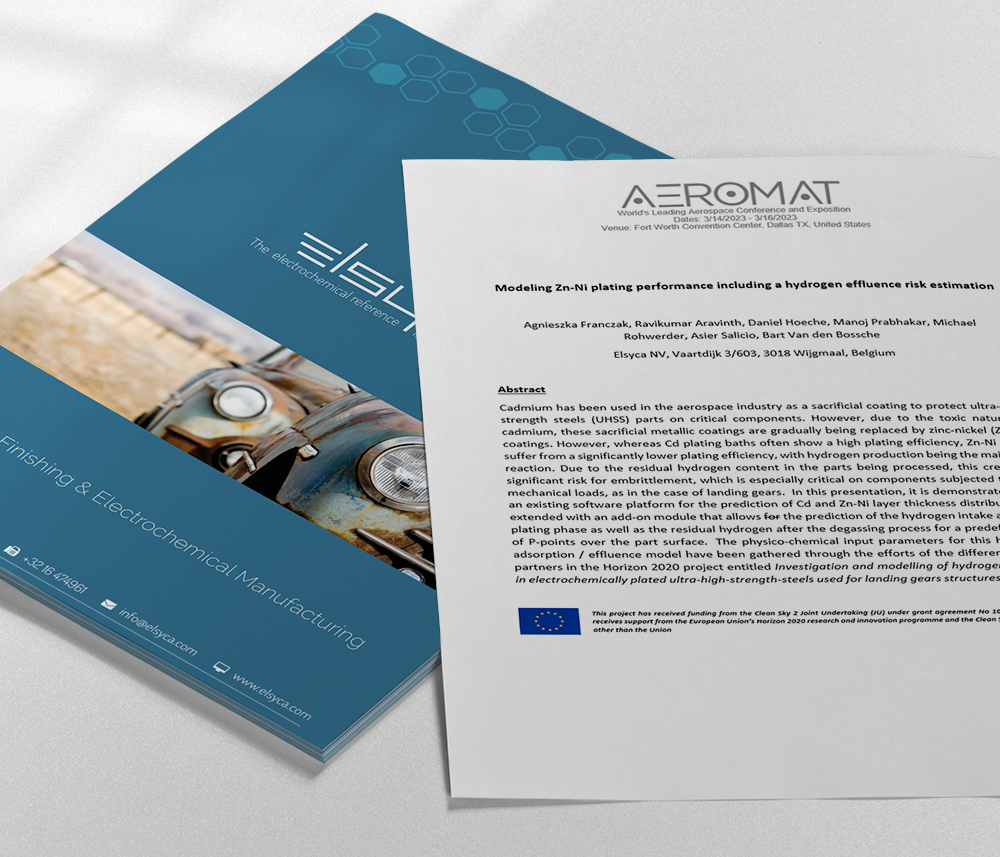
Modeling Zn-Ni plating performance including a hydrogen effluence risk estimation (AEROMAT 2023)
AEROMAT 2023 presentation

Modeling Zn-Ni plating performance including a hydrogen effluence risk estimation (AEROMAT 2023)
Agnieszka Franczak, Ravikumar Aravinth, Daniel Hoeche, Manoj Prabhakar, Michael Rohwerder, Asier Salicio, Bart Van den Bossche.
Abstract
Cadmium has been used in the aerospace industry as a sacrificial coating to protect ultra-high strength steels (UHSS) parts on critical components. However, due to the toxic nature of cadmium, these sacrificial metallic coatings are gradually being replaced by zinc-nickel (Zn-Ni) coatings. However, whereas Cd plating baths often show a high plating efficiency, Zn-Ni baths suffer from a significantly lower plating efficiency, with hydrogen production being the main side reaction. Due to the residual hydrogen content in the parts being processed, this creates a significant risk for embrittlement, which is especially critical on components subjected to high mechanical loads, as in the case of landing gears. In this presentation, it is demonstrated how an existing software platform for the prediction of Cd and Zn-Ni layer thickness distributions is extended with an add-on module that allows for the prediction of the hydrogen intake after the plating phase as well as the residual hydrogen after the degassing process for a predefined set of P-points over the part surface. The physico-chemical input parameters for this hydrogen adsorption / effluence model have been gathered through the efforts of the different project partners in the Horizon 2020 project entitled Investigation and modelling of hydrogen effusion in electrochemically plated ultra-high-strength-steels used for landing gears structures (H2Free).
